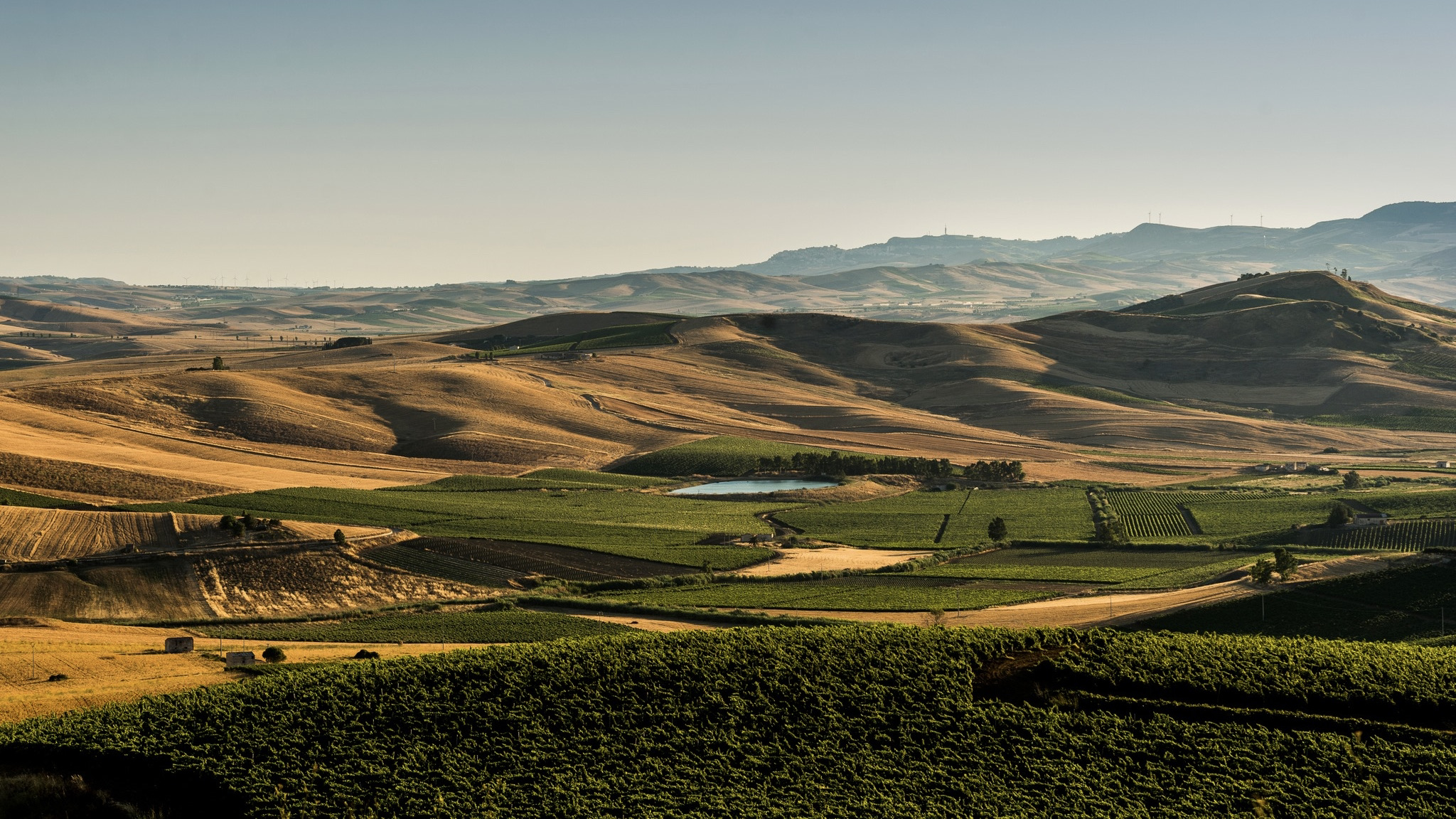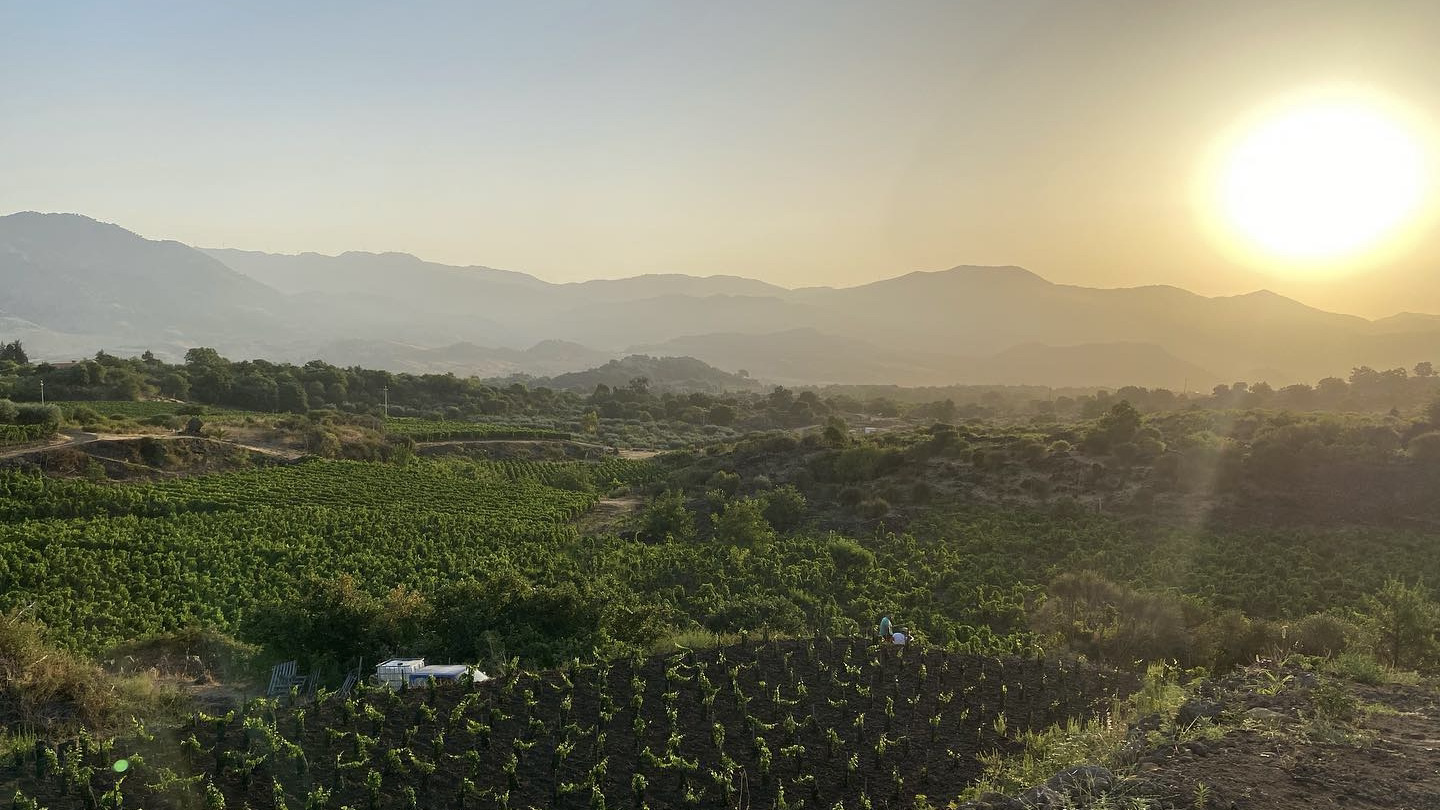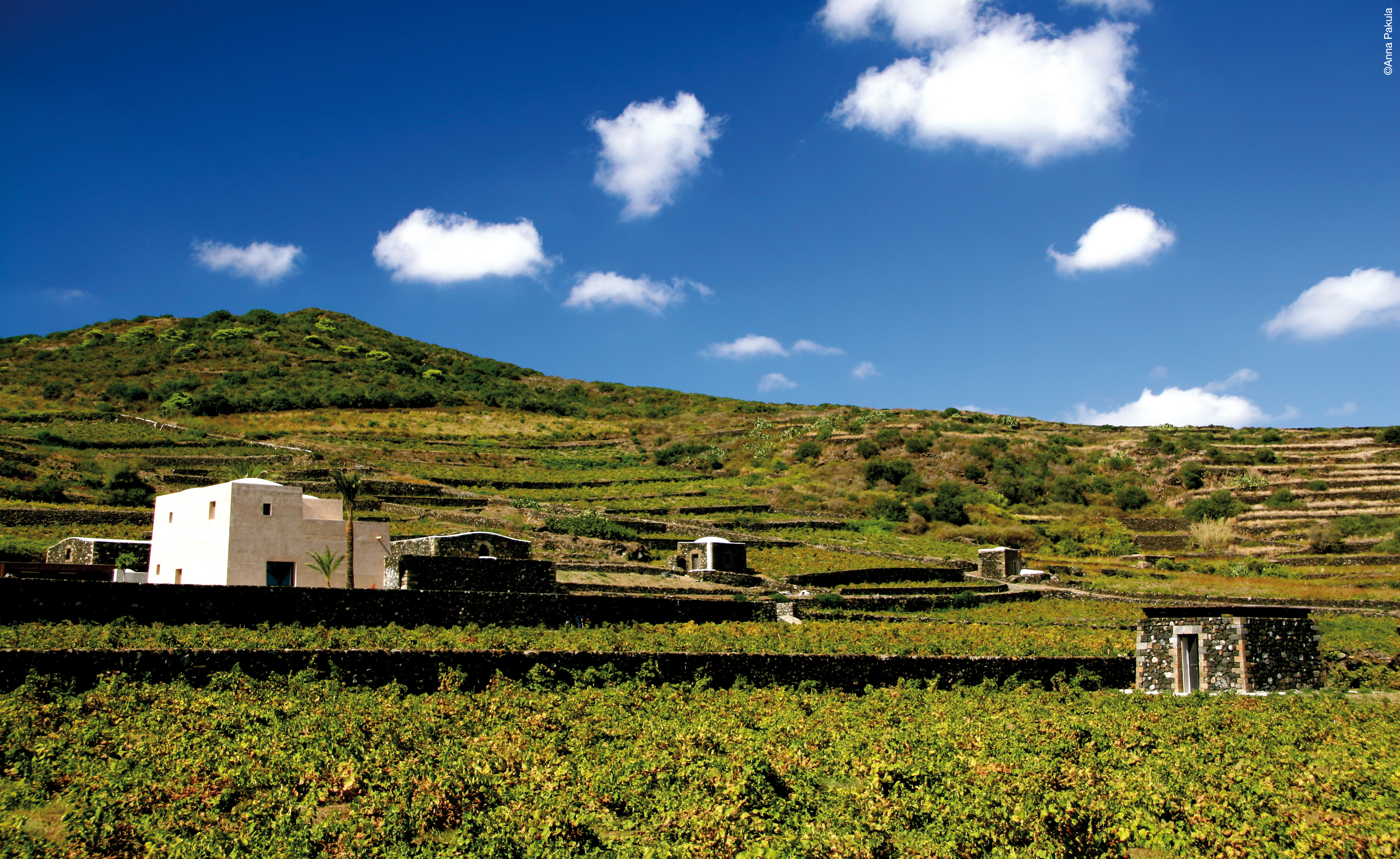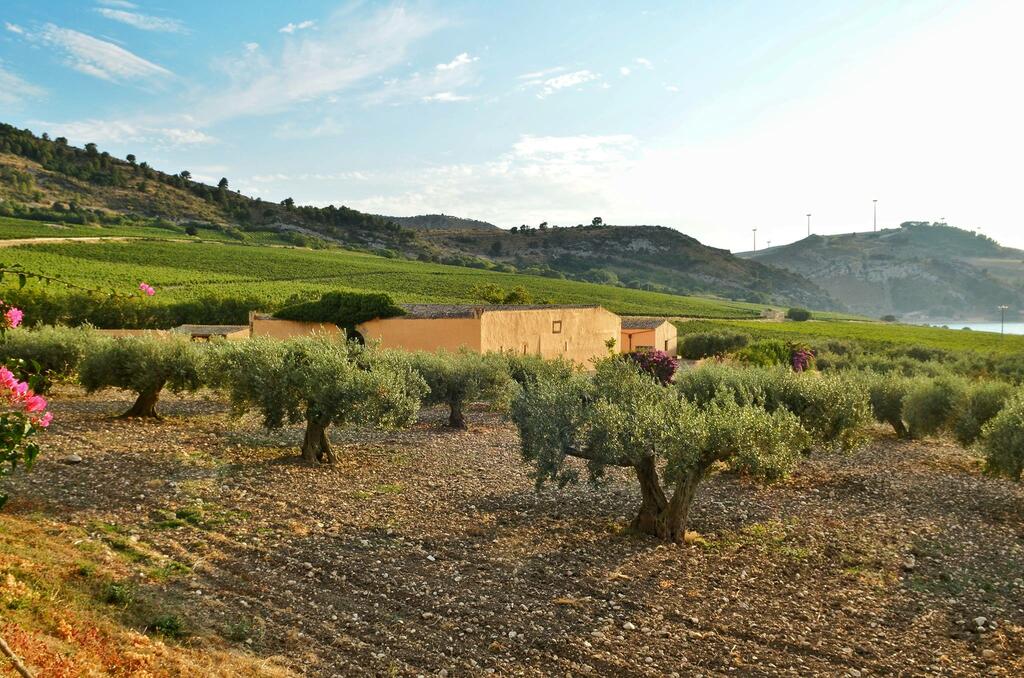Winemaking
Winemakers transport us to their wineries and vineyards to explain how terroir and winemaking create these unique wines found nowhere else on Earth.
Dive deep into Sicily's most important grape varieties and learn what makes these indigenous grape varieties unique in both the vineyard and the winery.
Nero d’Avola
Nero d’Avola is Sicily’s signature red grape variety indigenous to the island. With intense plum and spice aromas, it’s a bit of a chameleon, depending on the climate it grows in.
We spoke to the owner and winemaker of Cusumano Vineyards, Diego Cusumano, about what makes Nero d’Avola so versatile.

What makes Nero d’Avola special and what types of soil or terroir does it do best on?
“Nero d’Avola is a native Sicilian variety. It represents the history of Sicily, and has always been one of the main red grapes of the island.
Nero d’Avola expresses itself best in calcareous soils, containing clay and silt. If the vineyards are on hills above 1000 feet (300 m) above sea level it’s even better. The temperature variations between night and day enhance the finesse of this wine."
What's something you want everyone to know about Nero d'Avola?
“Nero d’Avola is a very versatile variety - it can create wines that are enjoyable when they are young, but it can also produce wines that age with great elegance and offer complexity and power. Its natural acidity allows it to always maintain an enviable freshness. Something that can be hard to find in a warm climate.”
What do you do in the cellars and the vineyards to make an excellent Nero d'Avola?
"We grow our Nero d’Avola in the most favored terroir, a white soil rich of Trubi, a typical local calcareous-clayey soil, on hills at 1300 feet (400 m) above sea level in the area of choice in Butera.
We pay great attention to the balance between vegetation (leaf and shoot growth) and fruit production to slowly and perfectly ripen the grapes. When everything is perfect, we harvest only the best selections of bunches in small boxes.
In the cellar we try to respect the integrity of the fruit as much as possible: destemming by vibration, using grape elevators, doing pump-overs without the use of pumps, moreover, each parcel is vinified separately and then time takes over.”
Grillo
Grillo is the up-and-coming white grape in Sicily! This grape is finding international success, thanks to the love and care its winemakers are showing in the vineyard and the winery.
We spoke with Laura Orsi at Tasca d’Almerita and Corrado Maurigi at Regaleali Estate to find out what makes Grillo so terroir driven.
What makes Grillo special and what types of soil or terroir does it do best on?
“ Grillo is a versatile variety. Depending on the degree of ripeness at harvesting time, it is possible to enhance citrus characteristics, high acidity, floral aromas, and full body.
Because the Grillo grape is present in many Sicilian terroirs with varied characteristics such as soil composition, altitude and exposure, the wine produced can be very different.
The Grillo grape is an indigenous Sicilian grape variety, it is the crossing of two varieties, the Catarratto and the Zibibbo. For this reason, it is capable of generating concentrated wines of great aromaticity and complexity at the same time.”
What's something you want everyone to know about Grillo?
“Grillo represents the modern winemaking of Sicily. It has all the Sicilian characteristics, from structure to acidity, from the body to flavors. A grape variety that can be suitable and can be “the interpreter” of different terroirs.
It can produce fruity and refreshing wines, including sparkling, but it can also produce concentrated and age-worthy wines too.”
What do you do in the cellars and the vineyards to make an excellent Grillo?
“The Grillo grapes in Tenuta Regaleali are grown in two different plots; Vigna Sant'Anna and Vigna Piana Case Vecchie.
Sant’Anna is a vineyard on the east and southeast side of the hill and has two different soil types, one with more sand and one with more clay. The two soils and two exposures of the vineyard lead the fruit to ripen at different times.
The half side on the sandy soil ripens about 1 week before the half side on clay soil. That characteristic can guarantee the body, structure and complexity of the final wine.
In Piana Case Vecchie, a portion of land comes from an old river, mainly clay soil of good depth. It tends to produce high yields, but can guarantee good acidity to the grapes and therefore freshness to the wine.
Our goal in the Regaleali Estate is to find the right pruning for a load of buds. Today, we do pruning long enough to accentuate the acidity and have less body and concentrated grapes.
In this area of Sicily, the Grillo grape ripens about 10 days later compared to the west of Sicily. Here the bunch and berries are smaller; therefore, the pulps are more concentrated. After pressing, there is more skin than pulp in the must. It is not easy to extract the must from these small berries because we use soft pressing.”
Nerello Mascalese
This grape helped bring the international spotlight to Sicily. It has the wonderful elegance of Pinot Noir, but the structure of Nebbiolo transmits its sense of place just as strongly. It’s the backbone of some of Sicily’s greatest wines.
We spoke to Frank Cornelissen, who creates fantastic wines in Etna about the grape to find out what makes it so special.

What makes Nerello Mascalese special and what types of soil or terroir does it do best on?
“Nerello Mascalese is able to produce wines with depth, body and great elegance. It is particularly sensitive to the various subsoils found on Etna and it can express those subtle differences well.
Personally, I feel that the subtle geologies of volcanic soil, especially here in the northern valley of Etna, with its cold winters and dry summers, is where Nerello Mascalese expresses itself at its best.”
What's something you want everyone to know about Nerello Mascalese?
“Nerello Mascalese has been grown on Mount Etna for centuries, on small terraces. This combination of a special variety in a special place, Etna with sandy, volcanic soils, make it live especially long. It can produce balanced fruit even when the vines are over 100 years old.”
What do you do in the cellars and the vineyards to make an excellent Nerello Mascalese?
Every winery has its own style in producing wines. Personally I like the search for elegance combined with structure. This means in my case low yields, possible old vines, late harvest with a prolonged skin contact and gentle extraction.
Aging in neutral tanks or big oak barrels is also helpful to express the subtleties and not overpower the finesse of the wines.
Frappato
Frappato is one of Sicily’s most elegant and refreshing grape varieties. Tasting a wine made from Frappato doesn’t seem like it’s been grown in one of the warmest climates of Europe. We spoke to the chief winemaker at Donnafugata, Antonio Rello, to learn more about this unique variety.

What makes Frappato so special, and what types of soil or terroir does it do best on?
“Frappato belongs to the ancient varieties of Sicily. It is adapted to mild, dry, and ventilated climates like in the windy area of Vittoria in Southeastern Sicily.
It ripens fairly late, with the harvest usually taking place in September. The sandy soils are loose with a good depth, and their high draining capacity enables the production of lower yields and smaller berries, which is a prerequisite for the optimal ripeness of the grapes.
Frappato is vinified and aged in steel, to bring out the typical floral and fruity aromas of the grape. Vinified in a single variety, Frappato presents a light ruby brilliant color with fragrant fruity and floral notes.
When blended with Nero d'Avola - as in the case of the famous Cerasuolo di Vittoria DOCG - it is more nuanced, with hints of graphite and spices.
Frappato wines in their pure form present a light-medium body and delicate tannin. The wines present a lively acidity and moderate alcohol.
They are extremely harmonious in taste and can easily be enjoyed by themselves, with starters, cheeses, and simple first courses such as pasta with tomato sauce or pizza. Due to their rather light structure, they can also be matched to fish dishes, served preferably slightly chilled.”
What's something you want everyone to know about Frappato?
“It’s different from what most consumers expect of red wine from Sicily: Fruit-driven, easy-drinking, extremely fragrant, and pleasant. Wines made from Frappato can be enjoyed by itself. Another plus is its recognizability as consumers love to be able to detect the origin of a wine!”
What do you do in the cellars and the vineyards to make excellent Frappato?
“The climate is characterized by mild winters and moderate summers, which benefit from the fresh sea breezes and the good temperature fluctuations between day and night.
In the highest part of our vineyards, the soils are honey-colored and mostly sandy, while the lower vineyards are part of the river bed and are darker and loamy.
The variety of these soils - in combination with the cultivated grape varieties - is an extraordinary quality factor as it enriches with expressions that we are committed to enhancing through tailored vinification.
In addition to the selection of the grapes in the vineyard (manual harvest), they are also selected on the vibrating table; a destemmer removes unripe or overripe grapes, allowing only the perfectly intact and ripe grapes to be vinified.
With the many tanks - ranging from medium to small ones - we can vinify the different plots separately, and in a tailored way, enhancing the great diversity in this estate arising from the interaction between land, grape variety, and human commitment.
The fermentation and aging in steel are intended to enhance the sharpness of the fruity and floral aspects of the wines we produce here.”
Carricante
Carricante finds its homeland in eastern Sicily, around and on Mount Etna. This refreshing, Riesling-like variety is also gaining international attention for its high quality and ability to age.
We spoke to Patricia Toth, winemaker at Planeta, about this native grape and how this grape thrives on volcanic soils.

What makes Carricante so special and what types of soil or terroir does it do best on?
“What I could define in my mind is that the best place for the Carricante is the mix of being in purely volcanic soil and being up on a mountain. We know that the composition of the "newborn" soils on Etna, with pure mineral ashes and a high percentage of organic matter, brings out the best in Carricante. The mix of salty notes and the sharp, linear acidity, especially of the upper vineyards, is unique.
Above 650 meters is where it grows best. Here the temperature switches between day and night, helping preserve the freshness.”
What's something you want everyone to know about Carricante?
“I would like everyone to know about the bottle aging capability of Carricante. If waiting to harvest at the exact right moment, especially in rainy or cool vintages, you can get an incredible balance of a complete aromatic expression, similar to Furmint or Riesling, along with a linear body and pH values of 2.98! (that’s very low!)
This means that Carricante as a variety is made for a long-term aging, balanced, serious bottle life kinda wine.”
What do you do in the cellars and the vineyards to make excellent Carricante?
“Regarding what we do in the cellar, a quote of Alessio Planeta regarding winemaking comes to my mind: "less is more", this is especially valid for Carricante.
We cool the grapes on reception to preserve aromas and sort by hand. We do a bit of skin maceration, though not so much in my opinion (this is very different to Riesling!).
Once fermentation is done we age on the fine lees for a long time and age in concrete and stainless steel. We use a bit of oak, but it’s not toasted and just in small percentages to preserve the character of the grape.”